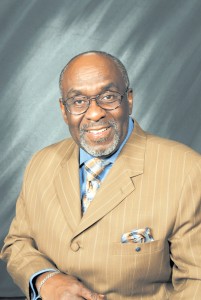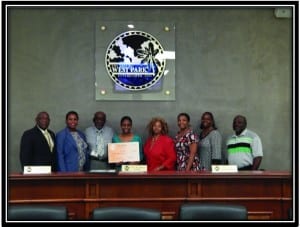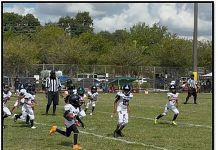
 October is Breast Cancer awareness month and although more and more people are becoming aware of the fact that breast cancer is a significant concern for females across the population, many fail to realize the role lifestyle plays in its prevention and management. Breast cancer accounts for over one third of invasive cancers in women. Epidemiological studies have linked diet composition with prognosis, indicating the strong role diet may play in prevention. Many medical professionals are recognizing that a physically active lifestyle, combined with weight management and a calorie controlled, low-fat diet high in vegetables, fruits, fiber and low in red meat intake are important components to reducing the risk. From the literature it seems that physical activity helps mediate inflammatory chemicals associated with obesity, while diet modification has a positive effect on gonadal hormones, retinoid-like activities of carotenoids, and increases the protective effects of biologically active dietary constituents.
October is Breast Cancer awareness month and although more and more people are becoming aware of the fact that breast cancer is a significant concern for females across the population, many fail to realize the role lifestyle plays in its prevention and management. Breast cancer accounts for over one third of invasive cancers in women. Epidemiological studies have linked diet composition with prognosis, indicating the strong role diet may play in prevention. Many medical professionals are recognizing that a physically active lifestyle, combined with weight management and a calorie controlled, low-fat diet high in vegetables, fruits, fiber and low in red meat intake are important components to reducing the risk. From the literature it seems that physical activity helps mediate inflammatory chemicals associated with obesity, while diet modification has a positive effect on gonadal hormones, retinoid-like activities of carotenoids, and increases the protective effects of biologically active dietary constituents.
BELOW I HAVE LISTED SOME BREAST CANCER RESOURCES FOR YOUR INFORMATION:
Whether you’re a breast cancer patient, a survivor, or the loved one of a woman who is facing it, educating yourself about the disease and finding support are vital. Here are places to gather reliable breast cancer facts and advice.
Breast Cancer Organizations:
National Cancer Institute (NCI)
The National Cancer Institute is part of the U.S. National Institutes of Health (NIH). This site provides comprehensive breast cancer facts including statistics, treatment, prevention, screening, testing, clinical trials, and research.

American Cancer Society (ACS)
The ACS provides wide-ranging breast cancer facts for patients, caregivers, and survivors. An online breast cancer treatment profiler tool helps patients understand how their diagnosis, test results, and medical history affect treatment options and generates free reports detailing treatment options, side effects, research summaries, and questions patients can ask their doctor. The ACS also offers community-level cancer information and patient services through more than 3,400 local offices.
BreastCancer.org
BreastCancer.org is a non-profit organization dedicated to providing reliable, complete, and up-to-date information about breast cancer. Its mission is to help women and their loved ones understand the complex medical and personal information about breast cancer so they can make informed decisions about breast cancer therapy. The Web site includes discussion boards, chat rooms, and stories of hope.
Breast Cancer Network of Strength The Breast Cancer Network of Strength provides immediate emotional support for people affected by breast cancer. “Your Shoes” is a peer support program that includes a 24/7 support center staffed by trained breast cancer survivors and has a toll-free hotline, email, and support groups. Interpreters are available in 150 languages. The organization also raises money to support breast cancer awareness programs and provide wig and prosthesis devices for low-income women.
Susan G. Komen for the Cure
Founded by the sister of a woman who lost her life to breast cancer, the Susan G. Komen for the Cure is the largest source of non-profit funds dedicated to the worldwide fight against breast cancer. Fundraising events like the Komen Race for the Cure — a series of 5K runs/fitness walks all over the world — raise millions of dollars a year. The Komen Web site provides information about breast cancer and ways to get involved in fundraising. National Breast Cancer Foundation (NBCF)
The NBCF’s mission is to educate people about breast cancer, stressing the importance of early detection. The non-profit organization helps provide free mammograms to women who cannot afford them and also supports research programs across the country. The Web site provides in-depth breast cancer facts including the different types of breast cancer, breast cancer therapy and treatment, and tips for living with the disease.
Hopefully this information will benefit you in doing all you can to take charge of your own health in regards to this disease.
On a final note, Last month our City Manager outlined his budget proposal for fiscal year 2013-2014. It is a budget that will aid the City in operating more efficiently, working smarter and making the most of new technologies the will improve city service. I was glad to see that the budget covers many areas which I am sure you are concerned about. Some of the things include no tax rate increase, preserving public safety, and investing in the infrastructure. Thanks to those that came out to the budget deliberations because it is “Your West Park” and the budget is nothing without your input. I always have been optimistic about our city and our ability to move forward. There is a story I read of a man who was walking his dog on a riverside path. He found an ancient gold penny. After examining it, he took it to a coin expert who said, “It is quite simply the most important single coin find for a century. We fell off our chairs when we realized what it was.” The penny is 1,200-years-old and bears the image of Coenwulf, an Anglo-Saxon king whose reign was between 796 and 821 AD. Prior to auction, the coin was to sell for approximately a quarter of a million dollars. The coin expert, said, “There is no way of putting a price on it because one hasn’t ever been found before. It is unique.” Unique it is, for on October 6, 2004, the coin brought $409,000 at auction, making it the most expensive British coin in history. The money will be divided between the landowner and the man who found it, but it was no accident that this man found the coin. He is an amateur metal detector enthusiast. He has an eye for metal and coins on the ground. He is always looking and waving his metal detector over the ground, even while walking his dog. There must have been hundreds or thousands of people who walked right over that coin and never found it. The point of the story is that you cannot have a pessimistic attitude toward life believing that nothing is ever going to work out. If you do not purposely look for good things, you will never find them. It takes effort. You have to open a lot of oysters to find a special pearl. It is not likely that oysters will fall from heaven. Optimism takes the time and trouble to find the good in the world, and despite the trouble we may face, keep on believing. In animal psychology there is a term called Learned Helplessness. It is a technical term originally used in reference to animals but is also appropriately applied to human behavior as well. Learned helplessness describes an animal or a person who has learned to behave helplessly, even when there is opportunity to avoid an unpleasant or harmful circumstance. It is essentially, in humans, it is a mental state in which the person perceives he or she has no control over the outcome of a situation. One writer sums that kind of behavior up in what he calls The Law of Belief. The Law of Belief states, “Whatever you believe, with feeling, becomes your reality; you always act in a manner consistent with your beliefs.” In other words, what we think either inhibits and limits us or energizes and frees us. So what do we do when we realize we have learned helplessness behavior? The key to unlearning helplessness and learning hopefulness is to replace “limiting beliefs and attitudes” with “empowering beliefs and attitudes.” Optimism does not wait on facts. It deals with prospects. Pessimism is a waste of time. As we prepare for the upcoming fiscal year the report is that our budget was balanced again. This year, the city experience continual commercial development with a steady flow of building department activities and the completion of much needed traffic calming projects. Adding to the excitement, we embarked on the longest infrastructure improvement project since the city’s incorporation: SW 56th avenue improvement. The 1.5 miles roadway improvement is intended to create a sense of destination, with surfaced asphalt pavement; bicycle Lanes; brick paved intersections; new sidewalks, and a landscape median; all while providing much needed traffic calming along one of the most travel roadways in the city. It must be noted that most of this improvement cost is funded through grants. Although it is with confidence that we have a financially sound city, other parts of the nation are still facing challenging economic conditions. As a result, our city manager continues to seek other means of generating revenue and is proposing the same Millage rate as last year. What has been proposed for fiscal year 2013-2014 is a budget of 12,873,498.00 based on the ad valorem taxation rate of 9.42. The following is a brief financial explanation of the Ad Valorem. Ad valorem taxation and revenue is a function of the adopted taxation Millage rate applied to the property tax base for commercial and residential properties and the city of West Park. The commercial property has both real property and personal property components to which the Millage rate is applied. Commercial real and personal property and residential real property tax bases are assessed, compiled, and reported by the Broward county property appraiser. This year there is much optimism for the city’s future. The budget plan provides resources to maintain city services while moving forward with strategies that ensure a positive, sustainable future.
Much thanks to our City Manager, and his staff for a job well done I would like to close with a few Halloween Cautions for parents and children: Ghosts! Goblins! Witches! And CANDY! For children, these things add up to a fun-filled Halloween. They look forward to it every year and parents work hard to make it the best and scariest time ever. But as most parents can attest, nothing is scarier than a fun time that turns terribly wrong because of an accident. In fact, according to the National Highway Traffic Safety as pedestrians on Halloween than on any other day of the year!
Some parents might say the best thing to do is to keep your kids safe and sound at home for Halloween, but chances are most kids would not agree. Discuss being dressed up with nowhere to go! The next best thing to do is to understand the possible risks and take action to keep your kids as safe as possible.
According to Safe Kids USA, the top five safety hazards on Halloween are:
No. 5 – Burns and Eye Injuries (attributed to improper costumes, toys, and candles)
No. 4 – Falls (attributed to improper costumes, poor lighting, and running)
No. 3 – Drunk Driving (drunk driving on Halloween has surpassed drunk driving on New Year’s!)
No. 2 – Non-Intersection Crossings (attributed to kids darting out into streets)
No. 1 – Pedestrian/Car Collisions (attributed to speed, distraction, and poor visibility)
Parents and kids alike can do very simple things to ensure a safe Halloween for everyone. The following tips for both parents and kids were developed by the American Academy of Pediatrics in conjunction with the Centers for Disease Control and Prevention and the National Safety Council.
Tips for Parents and Adults:
• Supervise trick-or-treating for children under age 12.
• Establish a curfew for older children.
• Prepare homes for trick-or-treaters by clearing porches, lawns, and sidewalks, and by placing jack-olanterns away from doorways and landings.
• Avoid giving choking hazards such as gum, peanuts, hard candies, or small toys as treats to young children.
• Inspect all candy for safety before children eat it. Although the risk that your child’s Halloween candy has been tampered with is extremely low, there is also the chance that his or her candy is unwrapped or spoiled.
• Parents and adults should ensure the safety of pedestrian trick-or-treaters.
• Make sure children under age 10 are supervised as they cross the street.
• Watch for children in the street and on medians.
• Exit driveways and alleyways carefully.
• Have children get out of cars on the curb side, not on the traffic side.
• Drive slowly.
• Avoid distractions while driving.
• Do not drink and drive.
Tips for Kids:
• Travel in small groups and be accompanied by an adult if under age 12.
• Use flashlights, stay on sidewalks, and avoid crossing yards.
• Go only to well-lit houses and remain on porches rather than entering houses.
• Carry a cell phone if unaccompanied and know how to reach a parent and how to call 911 in an e m e r – gency.
• Wear bright, reflective, and flame retardant clothing.
• Consider using face paint instead of masks (Masks can obstruct vision).
• Avoid wearing hats that will slide over eyes.
• Avoid wearing long, baggy, or loose costumes or oversized shoes to prevent tripping.
• Use costume knives and swords that are flexible, not rigid or sharp.
• Cross streets at the corner, use crosswalks (where they exist), and do not cross between parked cars.
• Stop at all corners and stay together in a group before crossing.
• Remember to look left, right, and left again before crossing the street.
• Bring treats





